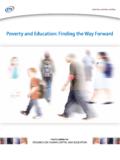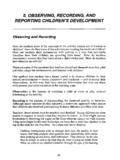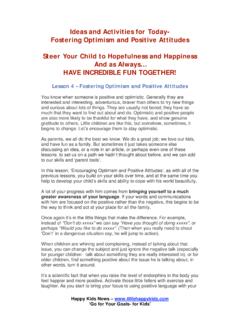Transcription of Chapter 9 The way forward: recommendations - WHO
1 Chapter 9 The way forward : recommendations9 The way forward : recommendations261 Disability is part of the human condition. Almost everyone will be tem-porarily or permanently impaired at some point in life, and those who survive to old age will experience increasing difficulties in functioning. Disability is complex and the interventions required to overcome dis-ability disadvantage are multiple, systemic, and will vary depending on United Nations Convention on the Rights of Persons with Disabilities (CRPD), adopted in 2006, aims to promote, protect and ensure the full and equal enjoyment of all human rights and fundamental freedoms by all per-sons with disabilities, and to promote respect for their inherent dignity (1).
2 It reflects the major shift in global understanding and responses towards dis-ability. The World report on disability has assembled the best available scien-tific information on disability so as to understand and help improve the lives of people with disabilities and facilitate the implementation of the Chapter summarizes the Report s findings about what is known about disability and makes final recommendations to assist stakeholders in overcoming the barriers that people with disabilities : a global concernWhat do we know about people with disabilities?
3 Higher estimates of prevalenceMore than a billion people are estimated to live with some form of disability, or about 15% of the world s population (based on 2010 global population estimates). This is higher than previous World Health Organization esti-mates, which date from the 1970s and suggested a figure of around 10%.According to the World Health Survey around 785 million ( ) per-sons 15 years and older live with a disability, while the Global Burden of Disease estimates a figure of around 975 million ( ) persons.
4 Of these, the World Health Survey estimates that 110 million people ( ) have very significant difficulties in functioning, while the Global Burden of Disease estimates that 190 million ( ) have severe disability the equivalent of disability inferred for conditions such as quadriplegia, severe depression, 262 World report on disability or blindness. Only the Global Burden of Disease measures childhood disability (0 14 years) which is estimated to be 95 million ( ) chil-dren of which 13 million ( ) have severe d i s a bi l it y.
5 Growing numbersThe number of people with disabilities is grow-ing. There is a higher risk of disability at older ages, and national populations are growing older at unprecedented rates. There is also a global increase in chronic health conditions, such as diabetes, cardiovascular diseases, and mental disorders, which will influence the nature and prevalence of disability. Patterns of disability in a particular country are influenced by trends in health conditions and trends in environmental and other factors such as road traffic crashes, natural disasters, conflict, diet, and substance experiencesThe disability experience resulting from the inter-action of health conditions, personal factors, and environmental factors varies greatly.
6 While disa-bility correlates with disadvantage, not all people with disabilities are equally disadvantaged. Women with disabilities experience gender dis-crimination as well as disabling barriers. School enrolment rates also differ among impairments, with children with physical impairment gener-ally faring better than those with intellectual or sensory impairments. Those most excluded from the labour market are often those with mental health difficulties or intellectual impairments. People with more severe impairments often experience greater populationsDisability disproportionately affects vulnerable populations.
7 There is a higher disability preva-lence in lower-income countries than in higher-income countries. People from the poorest wealth quintile, women, and older people have a higher prevalence of disability. People who have a low income, are out of work, or have low educational qualifications are at an increased risk of disability. Data from selected countries show that children from poorer households and those in ethnic minority groups are at sig-nificantly higher risk of disability than other are the disabling barriers?
8 The CRPD and the International Classification of Functioning, Disability and Health (ICF) both highlight the environmental factors that restrict participation for people with disabili-ties. This Report has documented widespread evidence of barriers, including the following. Inadequate policies and standards. Policy design does not always take into account the needs of people with disabilities, or existing policies and standards are not enforced. Examples include a lack of clear policy of inclusive education, a lack of enforceable access standards in physi-cal environments, and the low priority accorded to rehabilitation.
9 Negative attitudes. Beliefs and prejudices constitute barriers when health-care work-ers cannot see past the disability, teachers do not see the value in teaching children with disabilities, employers discriminate against people with disabilities, and family members have low expectations of their relatives with disabilities. Lack of provision of services. People with disabilities are particularly vulnerable to deficiencies in services such as health care, rehabilitation, or support and assistance.
10 Problems with service delivery. Issues such as poor coordination among services, inadequate staffing, staff competencies, and training affect the quality and adequacy of services for persons with disabilities. Inadequate funding. Resources allocated to implementing policies and plans are often inadequate. Strategy papers on pov-erty reduction, for instance, may mention disability but without considering 9 The way forward : recommendations Lack of accessibility. Built environments (including public accommodations) trans-port systems and information are often inaccessible.

















